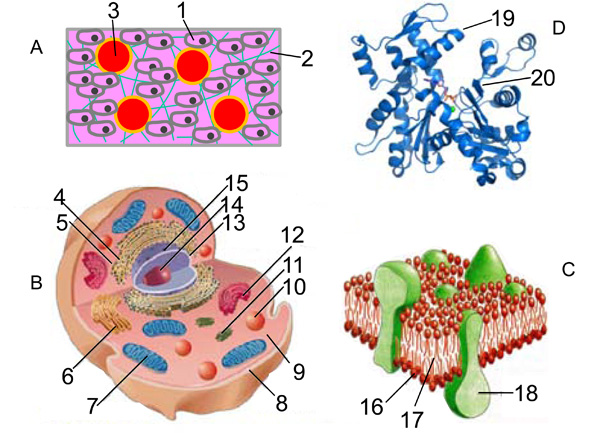Fig. (5) An illustration (not to scale) of some important structures/confirmations of a typical biological tissue (A), mammalian cell (B), cell plasma membrane (C), and protein (D): A biological tissue typically consists of cells (1), extracellular matrix (2) and blood vessels (3) through which oxygen and nutrients are transported to the cells; a mammalian cell consists of many important sub-cellular organelles such as the rough endoplasmic reticulum (4), ribosome (5), smooth endoplasmic reticulum (6), mitochondria (7), plasma membrane (8), cytosol (9), lysosome (10), centriole (11), Golgi apparatus (12), and nucleus that are demonstrated as nuclear membrane (13), nucleolus (14), and nuclear membrane pore (15); the cell plasma membrane contains a phospholipid bilayer with hydrophilic heads (16) and hydrophobic tails (17), and membrane proteins (18) that works as transport channels, receptors, and structural connections between intracellular skeleton and extracellular matrix; and the most important secondary structures of a protein are α helix (19) and β sheet (20).


